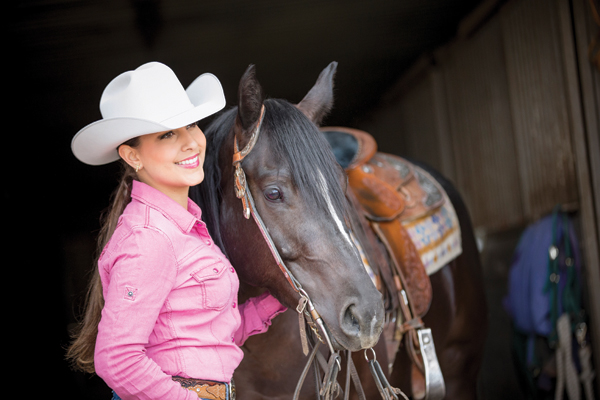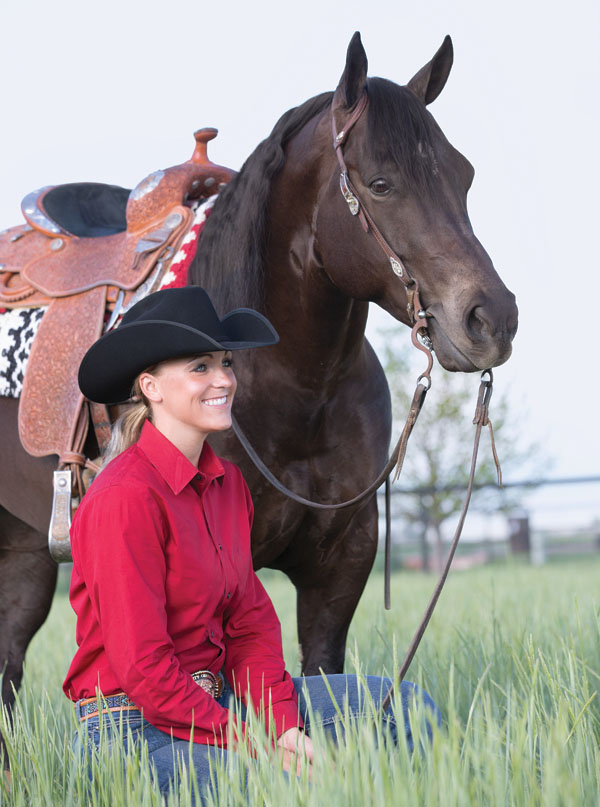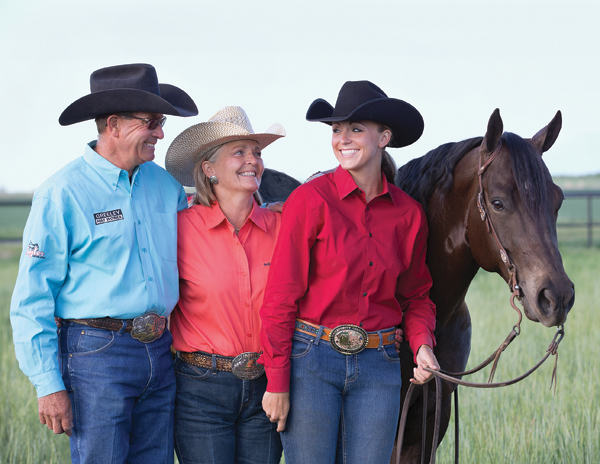When you walk into a show pen, no matter if you compete in halter, showmanship, horsemanship, reining, or cutting, the judge gives you an immediate once-over, from head to toe. That means your hat is the first thing a judge notices about you and sets the first impression. So, obviously, your hat means a lot.

Here, I’ll discuss hats of various price points that are standard for most hat manufacturers. I’ll outline what type of rider each is best for, as well as any other notable facts about each hat. The hats you’ll see are all from my shop, Greeley Hat Works in Colorado, but comparable styles are available from other hatmakers, too. Armed with this information, you’ll be prepared to head out hat shopping with confidence that you’ll understand what you’re getting and purchase the right hat for your needs.
Price Point: $90 and up.
Who It’s For: Summertime Showman.
About the Hat: Some competitors swear that straws aren’t for the show pen, but every judge I’ve spoke with says that if the judge is wearing a straw, it’s OK for competitors to sport them in the arena.
Hat Works Insight: Always go for a leather sweatband. You likely chose to wear a straw hat to stay cool in hot summer weather. The leather sweatband will breathe, absorb sweat, and keep you comfortable.
Special Care: After you wear your straw, brush off any dirt with a dry cloth or blow it off with an air hose. Use a baby wipe to remove anything that remains on your hat. Finally, don’t put it in a hat case until it’s dry—otherwise, it can mold.
Hat Tip #1: If it’s too cold or hot in the car or trailer for your child or your dog, then it’s not OK to leave your hat in the vehicle either. Extreme cold and heat can shrink the sweatband. Also, a good-quality hat is made of natural hair, which has barbs; high and low temperatures can put those fibers out of alignment.

Hat Tip #2: If you buy a straw, know that it’ll be your good hat for one show season, and probably should be rotated to your back-up hat the next.
Price Point: $150 to $250.
Who It’s For: The Newcomer.
About the Hat: I created the Western Treasure hat specifically for Hobby Horse. It’s made of a blend of European hare, and its proportions are smaller to flatter a woman’s face and frame. A hat at this price point is generally best for someone who’s not wearing it every day—it’s part of a show-pen uniform, not a daily lifestyle. If you take care of it and use it only at shows, it can last two to five years.
Special Care: The key to keeping a hat at this price in good condition is cleaning it after every wear. Brush it off, and store it in a hard-plastic hat case. If you do that, it’ll maintain its shape and be clean and ready to wear the next time you’re rushing to the show pen for your class.
A leather sweatband is equally important in any felt hat as it is in a straw.
Hat Tip #3: When you take your hat for a shape tune-up, look for a place that has a high-quality steamer. Good pressure and heat, from a real hat steamer, penetrates the hat, so it requires less moisture to shape the hat.

Price Point: $300 to $475.
Who It’s For: The Show-Pen Regular.
About the Hat: A hat at this price is usually made of a blend of European hare. It’ll hold up to regular weekend wear in the show pen for a few years, with good care.
Most hat bodies now come with a 4¼-inch brim, up from the previously popular 4 inches. That extra ¼-inch suits most body and face types, but if you’re of smaller stature, the brim can be trimmed. Sometimes cutting it down by just that ⅛-inch makes all the difference in your comfort level.
If your cowboy hat is strictly part of your arena attire, or you like to change colors, a hat of this quality will serve you well.
Hat Works Insight: This is the price point to buy at if you’re going to embellish a hat or buy a nontraditional color to go with a particular outfit. Chances are that you’ll sell the hat along with the outfit in a couple years, so you don’t need to over-invest in a top-quality hat that’ll have a short life in your closet.
Special Care: If your hat has embellishment, the basic care of the hat doesn’t change. However, do be careful not to brush the paint or stones too hard to avoid damage.
Hat Tip #4: If you’re going to buy one less-expensive hat, it should be the one you’ll wear the least. If you’re an everyday-tan-hat-wearing person and a Sunday-only-black-hat person, buy the best tan hat you can afford and scrimp on the black hat.

Hat Tip #5: Does your head have a unique shape? Consider being custom-fit for your next hat. It’ll ensure that your purchase is comfortable and fits well.
Price Point: Over $500.
What You Get: Greeley Hat Works Beaver20, Beaver Blend, or Pure Beaver, comparable to other high-X hat brands.
Who It’s For: The Serious Hat-Wearer.
About the Hat: As you go up in price, you also gain quality. Starting around $500, you can get a hat that’s about 20-percent beaver hair, and the beaver content increases with price from there (50-percent beaver and 100-percent beaver).
Using beaver makes the hat lighter weight, more water-resistant, and more durable in all conditions. The hat will shape easier, and hold that shape better over time.
Hat Works Insight: If you’re buying a basic color, like black, sand, or natural, buy the best quality you can. These basic colors will never go out of style, unlike trendy tones and embellishments. A high-quality hat at this price point can last many years of wear on a regular basis.
Special Care: The higher quality-hat you buy, the lower-maintenance it’ll be.
Hat Tip #6: If you’re buying an embellished or painted hat, be sure that it enhances the rest of your show outfit, rather than competes with it. For example, if your top is completely blinged-out, look into a simpler, more classic hat so that your top can be the showpiece. If you wear a simple top to compete, an embellished hat can be that one thing that sets you apart from the rest of the class, in terms of appearance.

Trent Johnson, Greeley, Colorado, has owned and operated Greeley Hat Works for 18 years, and the shop has been in service for 104 years. Johnson has made hats for everyone from devoted horsemen to top show-pen competitors to celebrities and dignitaries. Learn more about his hats at greeleyhatworks.com.






